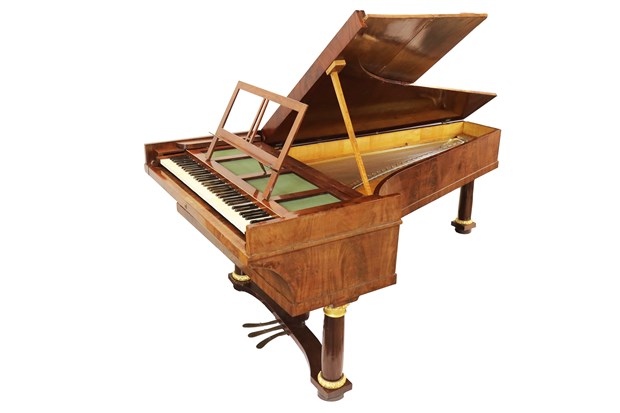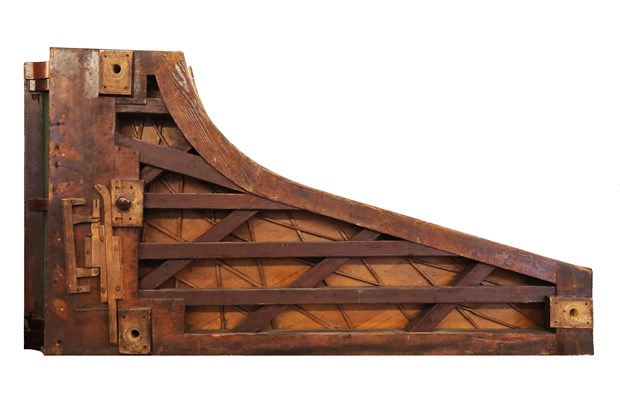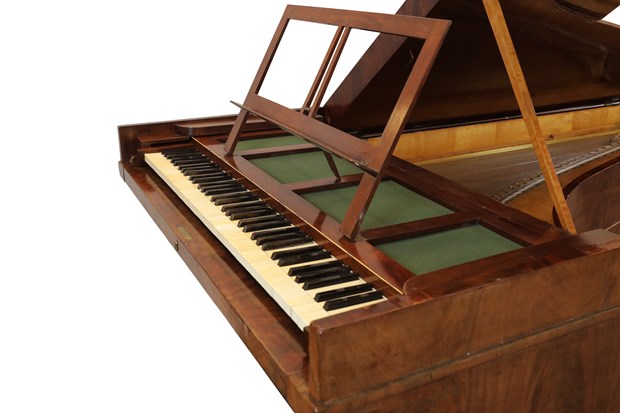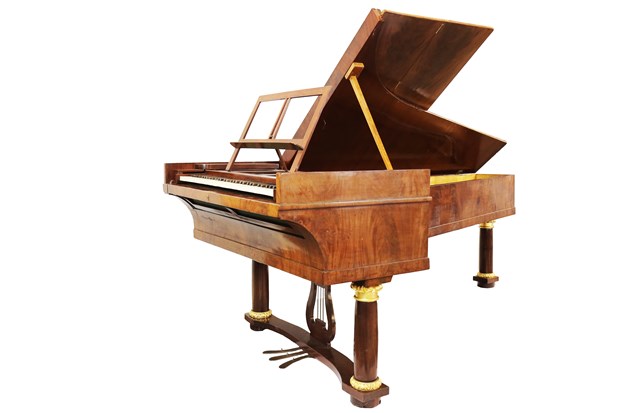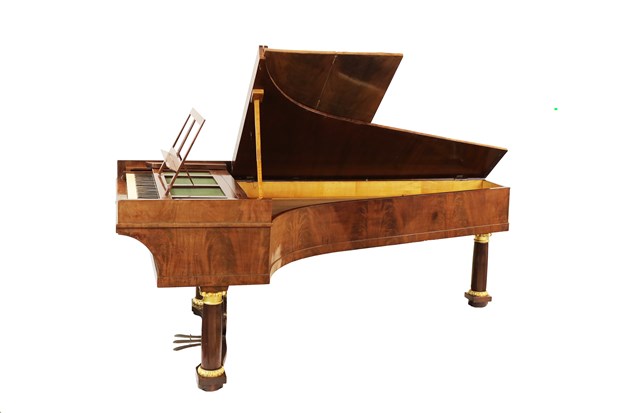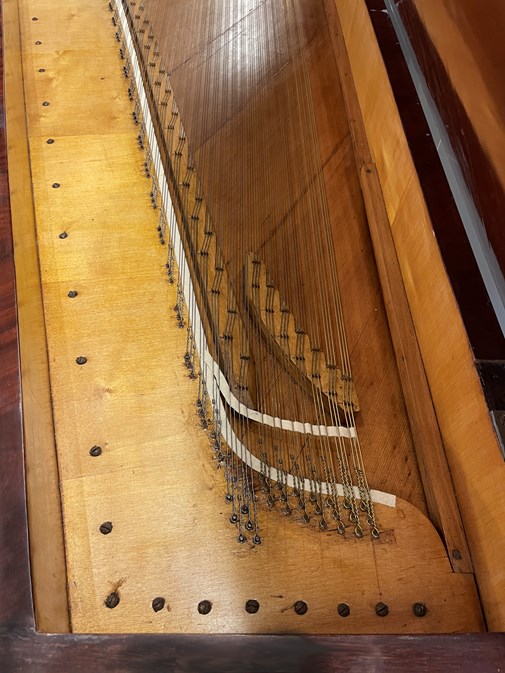NANNETTE STREICHER née STEIN DOWNSTRIKING GRAND, VIENNA, 1827
This exceptional grand represents a glorious moment in the history of piano building. In 1823, Johann Baptist Streicher designed a totally new concept of grand piano with downstriking action (Priv. Reg. Nr 2273) Archiv der Technischen Universität Wien. Streicher discovered that the impact of the hammer from above, facilitated a more efficiënt transmission of energy from the string into the soundboard. This model, expensive to produce, was the top of their line. The durability of the tuning was improved. In traditional grand pianos, there is a gap between the tuning block and the soundboard, because the hammers hit the string from below. The new system is more stable because the tuning block is connected directly to the soundboard, also the fact that the strings are now hit in the direction of the bridges creates a purer tone. The fortepiano has lost its inscription. There are enough details on this instrument that match the downstriking pianos from Streicher. The most obvious detail is the diagonal shift of the action, which can be attributed to Nanette Streicher. Also the floating wooden plate for the hitchpins is an invention of Streicher and was later patented by him. This allowed him to considerably shorten the non-sounding part of the string behind the bridge.
Technical data:
- Compass: 6 octaves (FF-f'''')
- Keyboard: naturals in ivory, sharps in ebony
- Pedals: 3: controlling keyboard shift - Duo corde and Una corda - dampers
- Dimensions: L 230 cm / W 119 cm
- Case: beautiful pyramid mahogany hand polished
- Literature: Collection Prof. Dr. Rudolf Ewerhart (1928-2022), Burghaus Wassenach Germany
- Chris Maene Collection number: CM 21 163
- Location: 3 - Museum headquarters "Piano's Maene" Ruiselede

